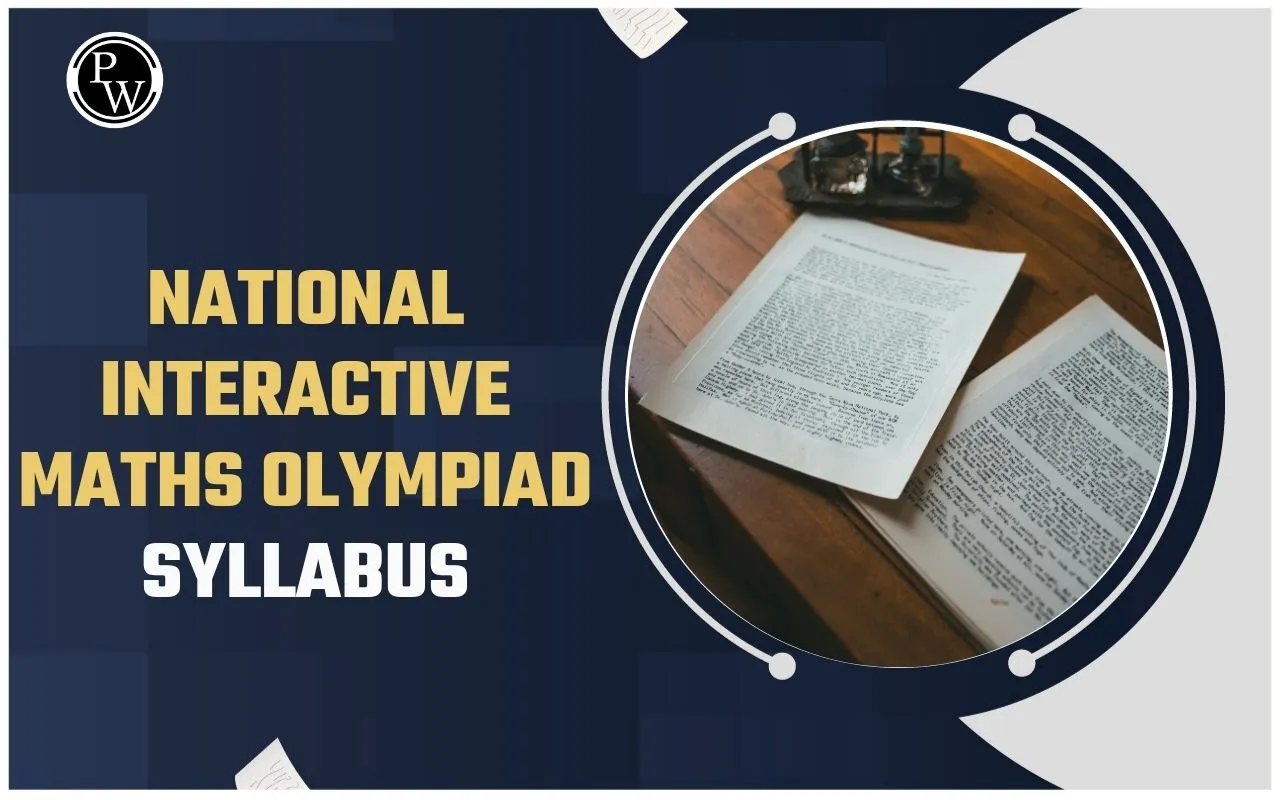

National Interactive Maths Olympiad Syllabus is created to boost understanding of mathematical concepts. This is initiated among school students through a balanced mix of conceptual learning and application-based questions. The examination is conducted by the SilverZone Foundation. The National Interactive Maths Olympiad (NIMO) aims to test students’ logical reasoning, numerical skills, and analytical abilities.
There is no officially released or static syllabus for the National Interactive Maths Olympiad. The SilverZone Foundation clarifies that the Olympiad does not introduce new topics outside the school curriculum.
National Interactive Maths Olympiad Syllabus PDF
While there is no official National Interactive Maths Olympiad Syllabus PDF released by the SilverZone Foundation, students can refer to a concept-based outline that mirrors their school curriculum. The NIMO subject syllabus PDF is prepared by students or teachers for personal use. The national interactive maths test syllabus mainly focuses on the following skill areas:
-
Arithmetic operations and number sense
-
Algebraic expressions and identities
-
Geometry and spatial reasoning
-
Mensuration and measurements
-
Data handling and statistics
-
Logical reasoning and problem-solving
Students are advised to review their regular math textbooks and identify interactive maths olympiad topics within these areas.
NIMO Syllabus Class Wise
NIMO syllabus class-wise structure is consistent with school-level math topics. The Olympiad covers what students already study in their respective classes. However, questions may be designed to test the depth of understanding rather than memorization.
Below is a class-wise overview based on the general structure of the National Interactive Maths Olympiad Syllabus 2025:
| Class | Key Interactive Maths Olympiad Topics |
| Class 1 | Numbers and counting, addition and subtraction, shapes and patterns, measurement (length, time, weight), and simple data representation. |
| Class 2 | Extended number operations, introduction to multiplication and division, money and units of measurement, time reading, and basic geometry. |
| Class 3 | Place value, operations on numbers, fractions, perimeter and area, data handling, and geometrical shapes. |
| Class 4 | Large numbers, factors and multiples, fractions and decimals, time and calendar, perimeter and area, and introduction to angles. |
| Class 5 | Ratio and proportion, percentage, profit and loss, average, speed-distance-time, geometry, and graphical representation. |
| Class 6 | Whole numbers, integers, fractions, decimals, algebraic expressions, basic geometry, mensuration, and statistics. |
| Class 7 | Rational numbers, exponents, algebraic equations, geometry (triangles, lines, and angles), data handling, and perimeter-area problems. |
| Class 8 | Rational numbers, powers, algebraic identities, factorization, geometry (quadrilaterals and polygons), statistics, and probability introduction. |
| Class 9 | Real numbers, polynomials, linear equations, coordinate geometry, triangles, statistics, and basic trigonometry concepts. |
| Class 10 | Quadratic equations, arithmetic progressions, trigonometric identities, geometry, mensuration, and statistics-probability. |
| Class 11 | Sets, relations, trigonometric functions, algebra (complex numbers, sequences), coordinate geometry, limits, and derivatives. |
| Class 12 | Functions, inverse trigonometry, matrices, determinants, calculus, vectors, probability, and linear programming. |
Silverzone NIMO Exam Pattern
The Silverzone NIMO exam pattern remains uniform across classes, though the level of complexity varies. The exam pattern is set as per the National Interactive Maths Olympiad Syllabus. Provided here is the general format of the National Interactive Maths Test Syllabus and exam structure for 2025:
| Section | Description | Marks Distribution |
| Section 1: Mathematical Ability | Includes conceptual and application-based numerical problems based on the school syllabus. | 30% |
| Section 2: Logical Reasoning | Tests critical thinking and problem-solving ability using patterns, sequences, and puzzles. | 20% |
| Section 3: Everyday Mathematics | Focuses on real-life mathematical applications and daily problem-solving. | 25% |
| Section 4: High-Order Thinking Skills (HOTS) | Includes challenging and analytical questions that test reasoning depth. | 25% |
Preparation Strategy for the National Interactive Maths Olympiad Syllabus
To score well, students should follow a consistent and smart preparation plan. They must make sure that their plan aligns with the National Interactive Maths Olympiad Syllabus. Some effective strategies include:
| Preparation Strategy for the National Interactive Maths Olympiad Syllabus | |
| Preparation Strategy | Description |
| Understand Class Concepts | Focus on topics taught in school since the Olympiad syllabus is the same as the school curriculum. Strengthen conceptual clarity from regular textbooks. |
| Practice Logical Questions | Include reasoning and pattern-based questions from Olympiad books to build analytical and critical thinking skills. |
| Use NIMO Practice Sets | Refer to SilverZone NIMO sample papers and mock tests to understand the structure and type of questions asked in the Olympiad. |
| Create a Revision File | Prepare a personal nimo subject syllabus pdf that includes key formulas, definitions, and solved examples for regular revision. |
| Time-Based Practice | Solve mock tests and sample papers within 60 minutes to improve speed, accuracy, and exam time management. |
